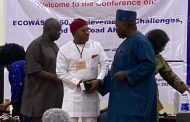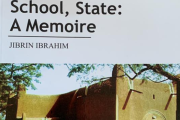Known as African Media Barometer NIGERIA 2019, it is a glossy and content beautiful but problematic documentation. Content is beautiful because it touches on virtually all the key issue areas around journalism in this country today but problematic as the panelists never reached consensus on most of them. But the scores on each issue offer an insight on the balance of opinion on each of the issues in question. It is thus the sort of text that a potential reader needs to personally read so as to come face to face with those issues that enjoyed consensus, those that did not, the degree of difference of opinion and why it matters.
 The masterminds behind it call it “an in-depth and comprehensive description and measurement system for national media environments on the African continent”. It is not an externally driven but a self-assessment exercise based on home-grown criteria derived from African Protocols and Declarations such as the Declaration of Principles on Freedom of Expression in Africa of 2002 by the African Commission for Human and Peoples’ Rights, insists the AMB team which gives authorship of the instrument to the convergence of fesmedia Africa – the media project of the Friedrich-Ebert-Stiftung (FES) in Africa and the Media Institute of Southern Africa (MISA) in 2004.
The masterminds behind it call it “an in-depth and comprehensive description and measurement system for national media environments on the African continent”. It is not an externally driven but a self-assessment exercise based on home-grown criteria derived from African Protocols and Declarations such as the Declaration of Principles on Freedom of Expression in Africa of 2002 by the African Commission for Human and Peoples’ Rights, insists the AMB team which gives authorship of the instrument to the convergence of fesmedia Africa – the media project of the Friedrich-Ebert-Stiftung (FES) in Africa and the Media Institute of Southern Africa (MISA) in 2004.
The content straddles the sort of issue areas that would attract the attention of the average media involved actor – publishers, professionals, the law making establishment, politicians, the civil society and other enforcers of integrity. Some would add and enrich it with their experience beyond the participants while others would have a lot to fetch from it.
The 63 – page pdf document has four main components. First is the diversity and independence index of the media landscape. Then the guarantee of freedom of expression! Transparency and independence of broadcasting, especially whether the state broadcaster has transformed and the standard of journalism is the third while the fourth is the standard of professionalism.
A random pick across the four compartments shows that those who find the time to read through the text would come across the scores on issues such as observance/breach of core principles of journalism; verdict on editorial independence in Nigeria; condition of work/pay for journalists; phenomenon of self-censorship; quality of training available; social media influence; the size of the advertising market; government’s use of advertising power and observation of diversity of voices in public broadcasting. There are more.
 On the whole, it is an inviting package in both the content and the aesthetics, with the pleasant spacing and editorial packaging. But more so because it responds to the all time poser about the media regarding the question of how to guarantee the media being on course in terms of fairness and balance, given its involvement in everything to a point of indispensability in the world today.
On the whole, it is an inviting package in both the content and the aesthetics, with the pleasant spacing and editorial packaging. But more so because it responds to the all time poser about the media regarding the question of how to guarantee the media being on course in terms of fairness and balance, given its involvement in everything to a point of indispensability in the world today.
So far, the media has remained a contested space between governments, the owners, advertisers and the professionals who work there. The trend tends to favour a non-governmental mechanism or process of control. It could be argued this is what the barometer speaks to.
The interesting thing about the current documentation which came out last month is its attempt at situating the media environment across Africa today. It notes the fact of diversity and vibrancy of the mediascape on the continent notwithstanding the stressful process of modernization. As a result of the relative vibrancy, efforts at muzzling the media on the continent have not been very successful. Instead of being cowed, the space has expanded from community focused radio to newspapers, television houses, magazines, film and the latest platforms – the online newspapers, it says.
But the report did not fail to draw attention to how diversity and ubiquity do have their own disadvantages, raising the question of who then monitors the media and remind it of the norms by which the profession is a profession.
So far, the barometer appears a fascinating response seeing the diversity of the composition of the assessors. It stretches from professional journalists, media academics, special communities such as ICT, environmentalists, gender, labour and disability communities. Although diversity and inclusivity do not, in themselves, translate to quality in all cases, it blocks the possibility of any angle being denied input into the making of the barometer.




























